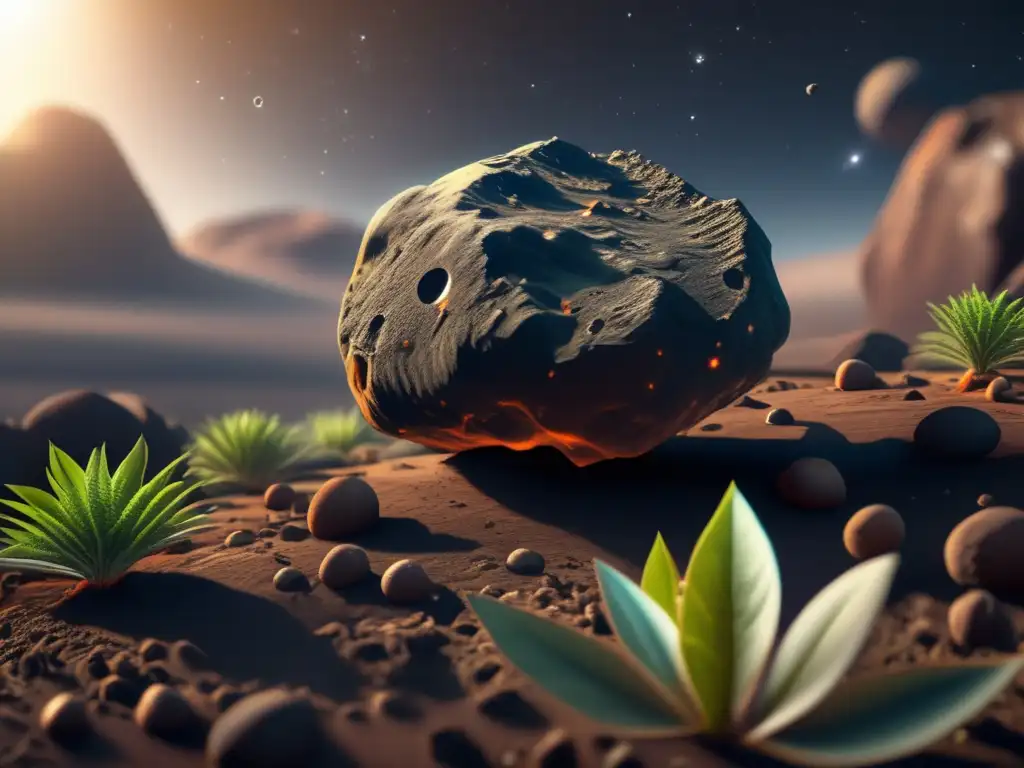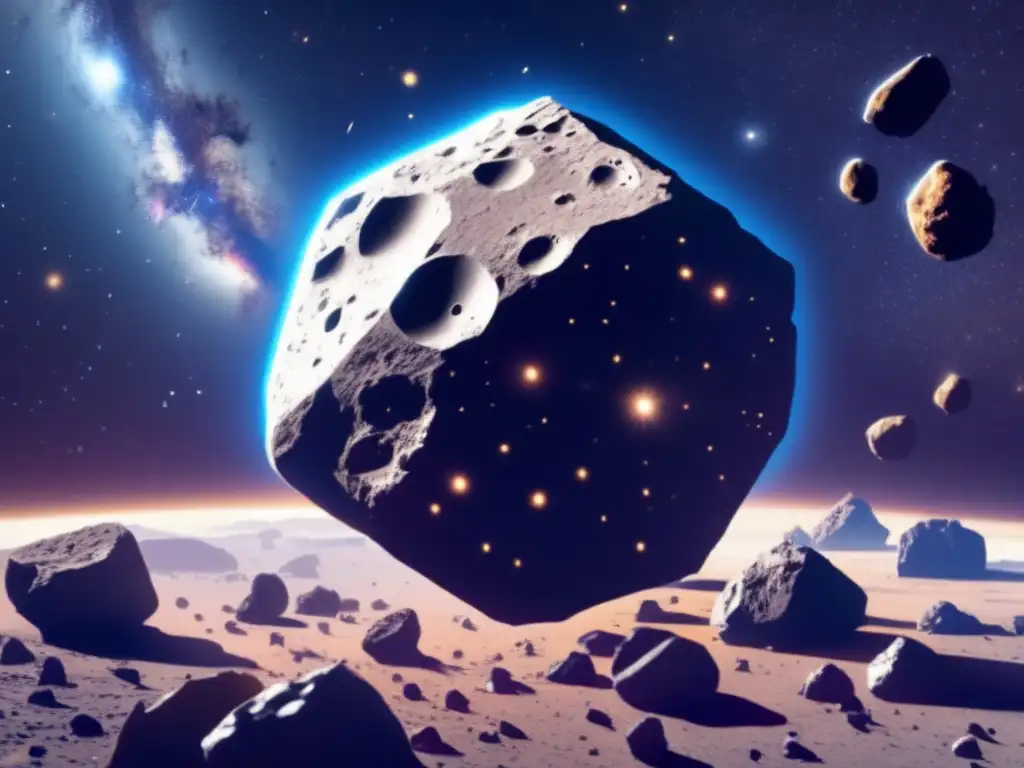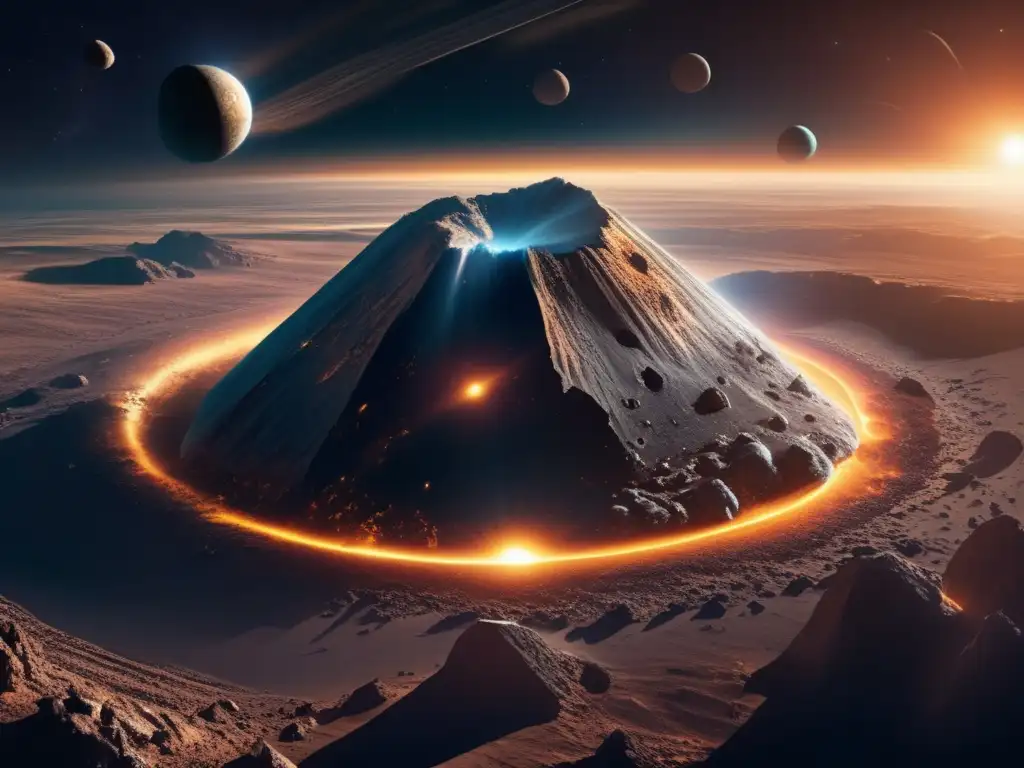Life From The Heavens: Asteroids And The Origins Of Life

Introduction
Asteroids are small, rocky bodies that orbit the Sun. They are remnants from the early days of the Solar System and can provide valuable insights into the formation and evolution of our planetary neighborhood. But could these celestial objects also hold the key to the origins of life on Earth? In this article, we explore the possibility that asteroids may have played a role in the emergence of life and what evidence supports this theory.
The Building Blocks of Life

Amino Acids on Asteroids
Amino acids are the building blocks of proteins and essential for life as we know it. In 2010, a team of scientists discovered that the Murchison meteorite, which fell in Australia in 1969, contains several types of amino acids. This finding suggests that these molecules could have originated in space and delivered to Earth via asteroids.
Organic Compounds
Organic compounds are carbon-based molecules that are essential for life. In 2018, the Japanese spacecraft Hayabusa2 collected samples from the asteroid Ryugu and returned them to Earth. Analysis of these samples showed the presence of organic compounds, including water and amino acids. This discovery strengthens the case for asteroids as a potential source of life's building blocks.
The Miller-Urey Experiment
The Miller-Urey experiment simulated the conditions of early Earth and demonstrated that organic compounds, including amino acids, could be produced through chemical reactions. However, the atmospheric conditions used in the experiment were later found to be inaccurate. Recent research has hypothesized that the early Earth's atmosphere may have been more similar to that of the asteroid Vesta, which raises the possibility that asteroids played a role in creating the necessary conditions for life.
Asteroids as Delivery Systems for Life

Panspermia
Panspermia is the theory that life could have originated elsewhere in the universe and delivered to Earth via comets, asteroids, or other cosmic objects. While the idea may seem far-fetched, there is evidence to support it. In 2019, scientists found hundreds of tiny organisms called tardigrades on the surface of the Moon. It is believed that these creatures may have hitched a ride on the Israeli Beresheet spacecraft, which crashed into the lunar surface. If life can survive the harsh conditions of space, it is possible that it could have originated elsewhere and traveled to Earth via asteroids.
The "Seeding" Hypothesis
Some researchers hypothesize that asteroids may have "seeded" life on Earth by delivering the necessary organic molecules. This theory suggests that the complex machinery required for life's emergence may have evolved elsewhere in the universe and arrived on Earth via asteroids. The idea has gained some traction but remains controversial among scientists.
The Origins of RNA
Ribonucleic acid (RNA) is a molecule that plays a crucial role in the creation of proteins and the transmission of genetic information. In 2018, a team of scientists proposed that RNA could have originated on asteroids and delivered to Earth via impacts. The theory suggests that asteroids may have provided an environment that allowed RNA to form and evolve into the essential molecule we know today.
Could Life Exist on Asteroids?

Extremophiles
Extremophiles are organisms that can survive in extreme environments, such as hot springs, acid lakes, and even in space. Studies have shown that some types of extremophiles may be able to survive on asteroids. This discovery raises the possibility that life could exist on these celestial bodies, although it is still a topic of debate among scientists.
Clues from Astrobiology
Astrobiology is the study of life in the universe. This field of research has uncovered many clues that suggest life could exist beyond Earth and on asteroids. For example, the discovery of subsurface oceans on some icy moons in our Solar System increases the likelihood that similar environments could exist on asteroids.
The Search for Extraterrestrial Life
Scientists are actively searching for signs of life beyond our planet. The recent discovery of phosphine gas in the atmosphere of Venus suggests the possibility of life existing on our nearest planetary neighbor. While the source of the gas is still unknown, the finding highlights the importance of exploring the potential for life on asteroids and other celestial bodies.
Frequently Asked Questions

-
Could asteroids be responsible for the origins of life on Earth?
While the theory remains controversial, there is evidence to suggest that asteroids may have played a role in delivering the building blocks of life to Earth.
-
Could life exist on asteroids?
It is possible that extremophiles or other organisms could exist on asteroids, but more research is needed to verify this possibility.
-
What is panspermia?
Panspermia is the theory that life could have originated elsewhere in the universe and delivered to Earth via cosmic objects like asteroids.
-
What is astrobiology?
Astrobiology is the study of life in the universe, including the potential for extraterrestrial life.
-
Why is the search for extraterrestrial life important?
The search for extraterrestrial life could provide valuable insights into the origins of life and the nature of the universe.
Conclusion
Asteroids may hold the key to the origins of life on Earth and beyond. The discovery of organic compounds and amino acids on asteroids strengthens the case for these celestial bodies as a potential source for the building blocks of life. While the possibility of life existing on asteroids remains uncertain, continued research into these small, rocky bodies could provide valuable insights into the nature of our Solar System and the universe at large.
Thank you for reading this article! We encourage you to share your thoughts and opinions in the comments section. Please consider subscribing to www.asteroidrealm.com for more articles and news about asteroids and space exploration.
Additional Resources

For further reading on asteroids and their role in the origins of life, we recommend the following resources:
- "The Lifebox, the Seashell, and the Soul" by Rudy Rucker
- "Astrobiology: Exploring Life on Earth and Beyond" by Kevin Plaxco and Michael Gross
- "The Origins of Life: From the Birth of Life to the Origin of Language" by John Maynard Smith and Eors Szathmary
 Cosmic Origins: Could Life On Earth Have Come From Asteroids?
Cosmic Origins: Could Life On Earth Have Come From Asteroids? The Possibility Of Life: Microbial Habitats In Asteroids
The Possibility Of Life: Microbial Habitats In Asteroids Asteroids: Carriers Of Extraterrestrial Life?
Asteroids: Carriers Of Extraterrestrial Life?If you want to discover more articles similar to Life From The Heavens: Asteroids And The Origins Of Life, you can visit the Asteroids and Extraterrestrial Life category.
Leave a Reply

Articulos relacionados: